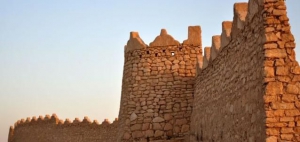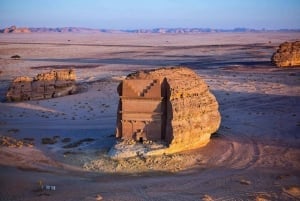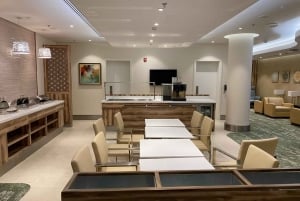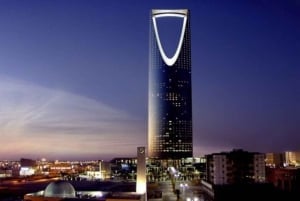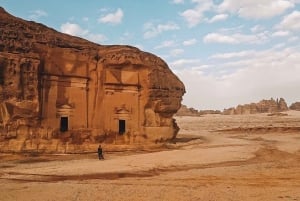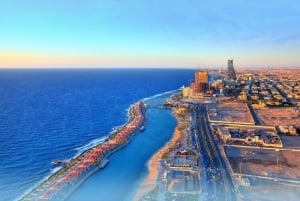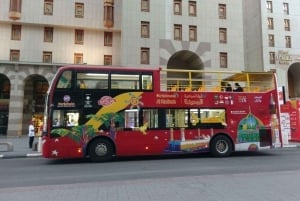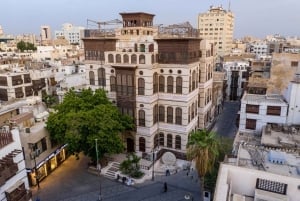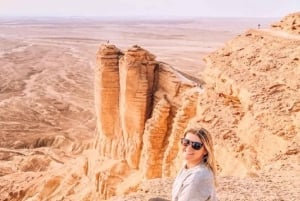History and Culture
History
Saudi Arabia is the homeland of Arab peoples and tribes, and of Islam, the world's second-largest religion, and the location of the two holy pilgrimage cities of Mecca and Medina. Its language is Arabic. While Saudi Arabia is composed of districts, its main regions are the Hejaz and the Nejd.
The Hejaz region
The region of Hejaz (also spelt Hijaz) in Saudi Arabia was once a kingdom ruled by the Hashemites (who today rule Jordan). The history of the region goes as far back as 6th century BCE. The Nabateans took over from 100BCE to 200 CE (creating the wondrous Mada'in Saleh site), and it in the Hejaz where you’ll find the beautiful carved Nabatean city of Mada’in Saleh.
The Hejaz was controlled by various centres of power after that: Baghdad until 1258, then the Egyptians; then came the Ottoman Turks who occupied it but kept it under the control of the Sharifs of Mecca, the noble families directly descended from the Prophet.
The Nejd region
The Nejd (also spelt Najd) is in the center of the Arabian peninsula, and the birthplace of the religious Wahhabi movement. Geographically, it is a plateau bordered at the south by the Empty Quarter and by valleys elsewhere. Lush oases line the mountainous escarpment of Tuwaiq . Unlike Hejaz, Nejd was rarely occupied, and retained a distinct identity over the centuries.
The Founding of the Kingdom
The Kingdom of Saudi Arabia was founded by King Ibn Saud (1882–1953). A descendant follower of the Wahhabi tradition of Islam, he took control of Riyadh in 1902 and instituted the Arab nationalist movement. In 1906, Wahhabi governance had become established in Nejd. By 1925, Hejaz was conquered. The Hejaz and Nejd regions were merged to create the Kingdom of Saudi Arabia in 1932, ruled by an absolute monarchy through the Islamic Sharia. The beautiful and mountainous region of Asir was incorporated into the Kingdom one year later.
By 1936, oil was discovered, but commercial production only began during World War II. The Kingdom’s new found wealth allowed it to provide tax-free free health care and education for its people. When Ibn Saud died in 1953, his eldest son, Saud, took over for 11 years. His impact on the Kingdom was through education, a natural step towards development: schools across the Kingdom were established, as was the first institute of higher education: the King Saud University, completed in 1957.
Plagued by poor health, the monarch was replaced by King Faisal, a leader who built the country’s economic, industrial and social development sectors, and under whose rule, the first girls’ school was built.
His demise at the hands of an assassin was tragic but Saudi Arabia’s development forged ahead at a rapid pace with King Khaled, and later in 1982 with King Fahd.
King Fahd assumed the title of Custodian of the Two Holy Mosques, and was central in supporting business enterprise and investment. He also initiated major improvements and expansion of pilgrimage sites, facilities and transportation to safely accommodate millions of pilgrims each year. King Fahd also restructured government and in 2005 saw the implementation of the Kingdom’s first national municipal elections.
King Abdullah has been at the helm of the Saudi monarchy since King Fahd’s death in 2005. The Kingdom is also served by Crown Prince Salman who is also its Minister of Defense.
Culture
Saudi Arabian culture may be traditional and conservative, but the country has much to offer the Saudi citizen as well as the expat in terms of work opportunities, investments, and professional growth. Saudi Arabia is a country that is also discovering itself: its environment, its natural surrounds and its cultural depth are slowly being opened up to the public.
Saudi Arabia is an unexplored treasure of history, culture, art, and, yes, leisure activities: excitement and wonder from its pristine Red Sea waters to its inland oases and desert sand dunes.
The two largest cities, Riyadh and Jeddah, are the country’s cultural hubs. Both cities also offer an exciting range of outdoor desert and sea activities: desert sports and Red Sea diving and snorkeling.
Music, poetry recitals and visual arts dominate the cultural landscape of the two main cities. Arabian music, dance and poetry have been greatly influenced by the various cultures that pilgrims brought with them over the centuries and local nomadic Bedouin traditions: its sword dances, desert life and its tranquil, sunset-timed, round-the-fire custom of oral poetry and storytelling. And once a year, all that and more is re-enacted at the Janadriyeh Festival.
People
Saudi Arabia has a population of over 28 million, including 9 million resident foreigners. Most Saudis are ethnically Arab. Some are of mixed ethnic origin, descended from Turks, Iranians, Indonesians, Indians, Africans, many of whom arrived as pilgrims and stayed behind in the Hejaz region. Many Arabs from neighboring countries are employed in the Kingdom. There are significant numbers of Asian expatriates mostly from India, Pakistan, Bangladesh, Indonesia and the Philippines.
Photo credits on this page: Blue Abaya Photography





